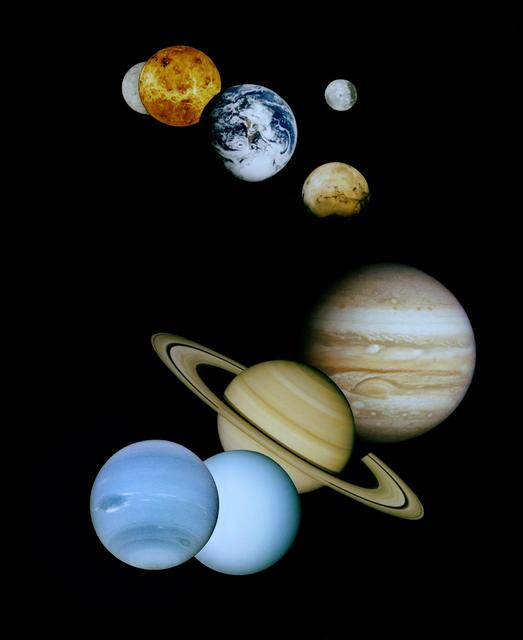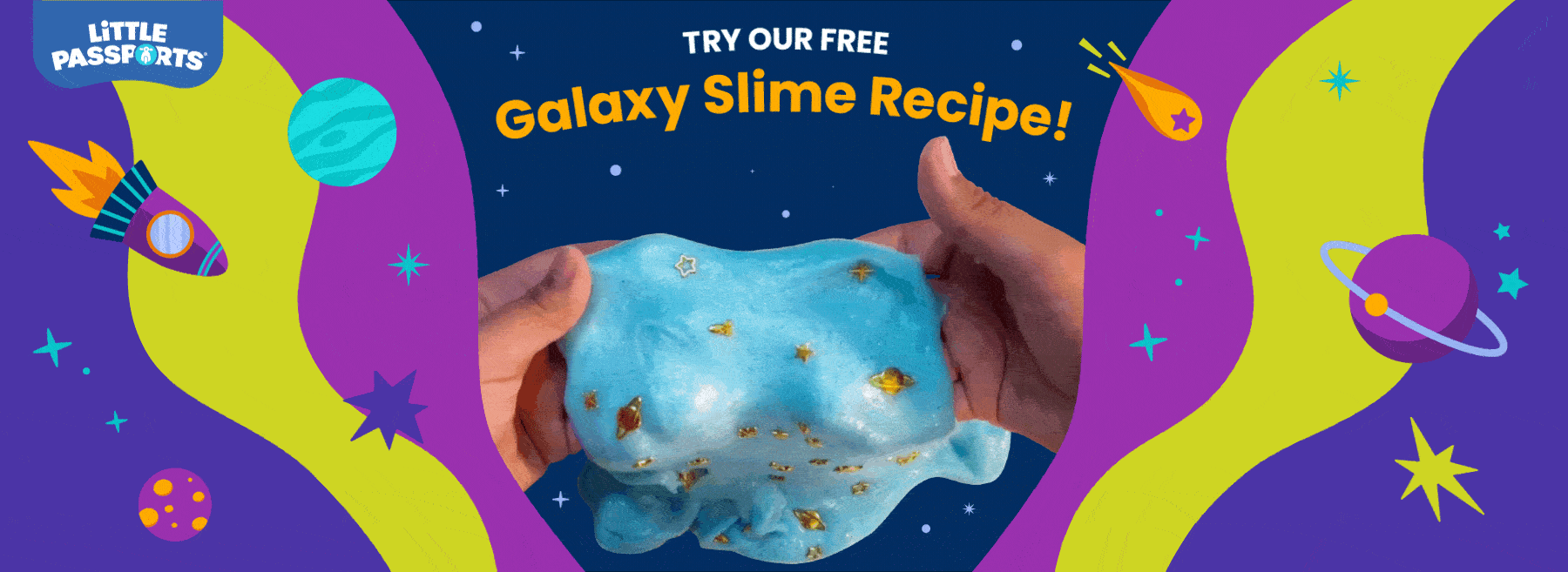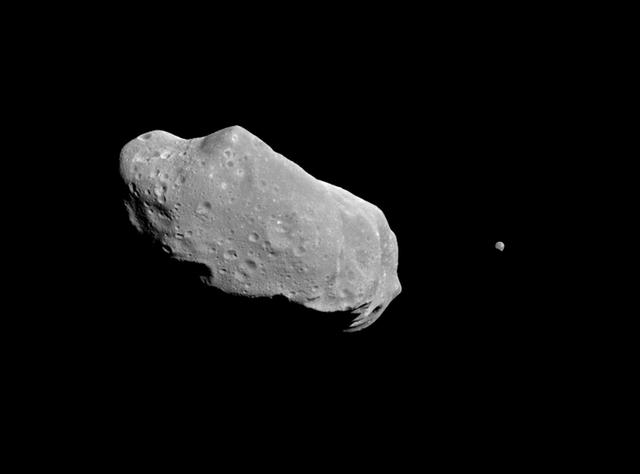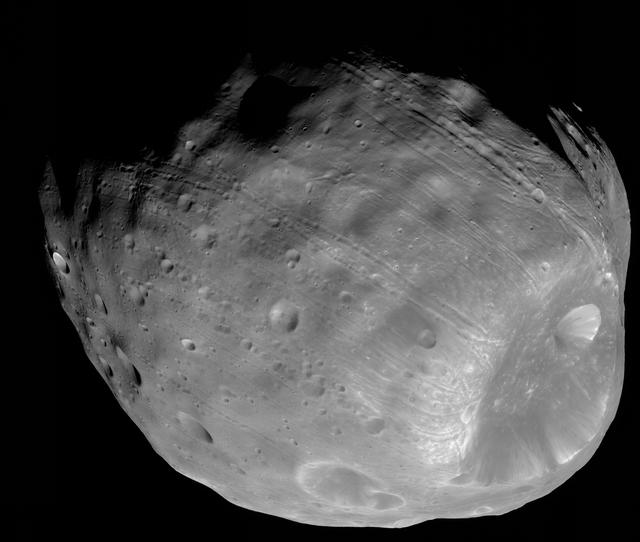
Why Are Planets Round?
If your child is thinking of exploring space, they probably have lots of questions about what’s out there. For example, every planet in our solar system is round. But other objects in the solar system, like asteroids, comets, and small moons, aren’t. Why? The answer in this case is that planets are round because they’re so big, and because of the way gravity shapes large objects in space.

What Is Gravity?

Gravity is a force that pulls all matter toward other matter, even over enormous distances. But its effect on something depends on how much matter is contained within that thing—how much mass it has. Gravity is also very weak, so it only has a noticeable impact on objects with a lot of mass.

One of the easiest ways to understand gravity is to think about yourself and the Earth. Gravity from the Earth constantly pulls you down, toward the center of the Earth. Your body also pulls the Earth up, toward your center. But because Earth contains so much more mass than you do (nearly six septillion kilograms, which is a six with 24 zeroes after it—the average human adult has a mass of about 62 kilograms), it pulls you much harder than you pull it.
How Does Gravity Make Planets Round?
That same pull toward the center makes planets round. Planets start their lives as clumps of rock or ice floating in space. Over long periods of time, the gravity of the largest clumps pulls smaller clumps to them, and they stick together. Imagine a rock the size of your town spinning around in empty space. If a pebble were near it, gravity would eventually pull that pebble onto the rock. As more and more pebbles stuck to the rock and buried the first pebble, they would add to the rock’s mass and make its gravity stronger, attracting more pebbles, and so on.
This image shows the asteroid Ida with its tiny moon. Ida’s gravity is strong enough to make the moon orbit it.

Gravity pulls toward the center equally in every direction, so as a growing planet attracts more mass, that mass naturally evens out depressions and gives the planet a round shape.
Gravity doesn’t make planets perfectly round, though. Planets still have mountains and valleys, and the speed at which planets rotate makes most of them bulge a little in the middle. But when you’re looking at them from far away, those bulges aren’t noticeable. Once an object in space gets wider than a couple hundred miles, it becomes round.
Are All Planets Round?
Yes, all planets are round. There are a lot of objects in space, and some of them—like moons and asteroids—are pretty big. Scientists need a way to tell the difference between planets and other objects, and measuring an object’s roundness helps them do it.
Asteroids and moons aren’t always round because they aren’t large enough for gravity to make them that way. The two moons of Mars, Phobos and Deimos, make a good example. Phobos, the larger moon, is almost round except for a huge crater on one side and a big lump on the other. But Deimos, which is about a fifth the size of Phobos, looks like a really big rock you might pick up near a stream. It’s not round at all.
So all planets are round because scientists decided that in order to be classified as a planet, an object has to be really big, and gravity makes really big objects in space round.
Together Time
One time-tested way of introducing kids to astronomy is to teach them to find the planets of the solar system in the night sky. Jupiter, Mars, and Venus are all relatively easy to spot as long as the sky is clear and dark. Saturn and Mercury can sometimes be seen as well.
To experience the planets for yourself, head outside with your family on a clear night and follow these instructions.
How to Find Planets at Night
To find planets at night, start by looking for a line in the sky that all planets, including Earth, orbit the Sun on. It’s called the ecliptic.
Watching the motion of the Sun, which always follows the ecliptic, is the most accurate way to find the ecliptic. But that can be difficult without looking directly at the Sun, which is dangerous for your eyes, so it’s better for kids to watch the motion of the Moon instead.
The Moon doesn’t exactly follow the ecliptic, but it’s pretty close—just five degrees off. If you imagine a line all the way across the sky that touches both the Moon and the place the Sun sets, any planets visible on a given night should be near the line.
This image taken in Chile shows the Moon and Venus in line along the ecliptic with the setting Sun.

Unlike stars, the planets usually don’t twinkle, because they reflect enough light toward the Earth that the atmosphere doesn’t interfere with it very much. So if you find a bright dot in the sky along the ecliptic that doesn’t twinkle, you might have found a planet! Venus and Mercury appear close to the Sun and are easiest to spot right after sunset, while Mars, Jupiter, and Saturn can be anywhere along the ecliptic.
Sometimes you can see the planets’ colors as well. Mars often looks reddish; Jupiter a little tan, orange, or cream; Venus white; and Mercury and Saturn yellowish. Finding the planets at night on your own is a fun way to connect with the ancient human tradition of stargazing, but if you’re having trouble, you can add a little modern magic and use a stargazing smartphone app to help.


